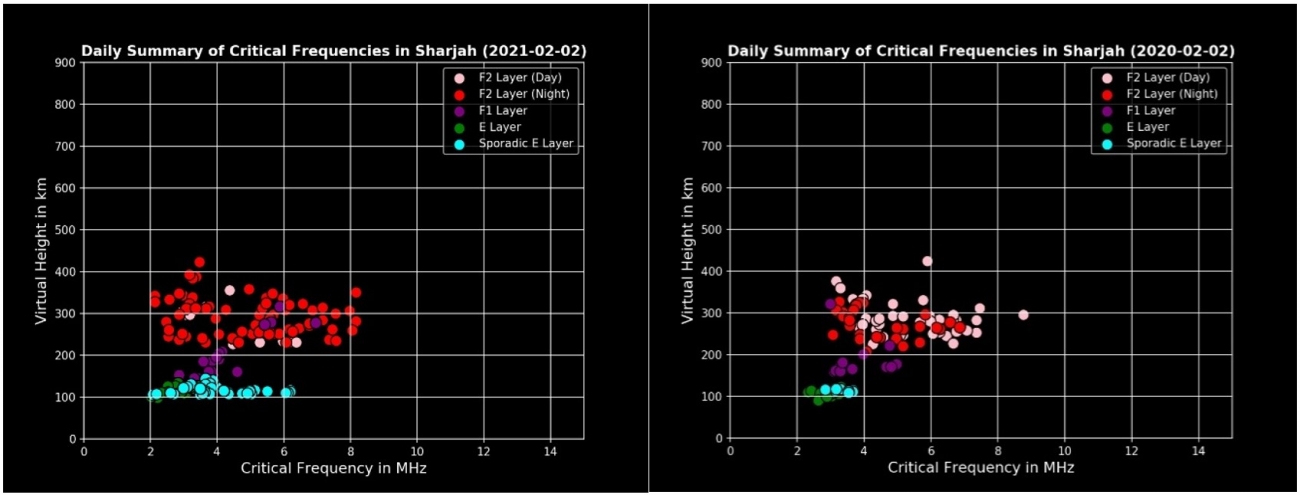A glaring difference in the ionosphere's condition on the two different days is the more persistent presence of the sporadic E layer in 2021, compared to the same time in 2020. Researchers at the Space Weather and Ionosphere (SW&I) Laboratory at SAASST believe this is to be attributed to solar activity, as the Sun has been more active now than in early 2020, as evident from the number of sunspots during the two periods. A strong presence of the F2-layer in 2021 also gives credence to the theory since F2-layer critical frequencies and heights during a 24-hour period improve with the strength of the solar cycle.



